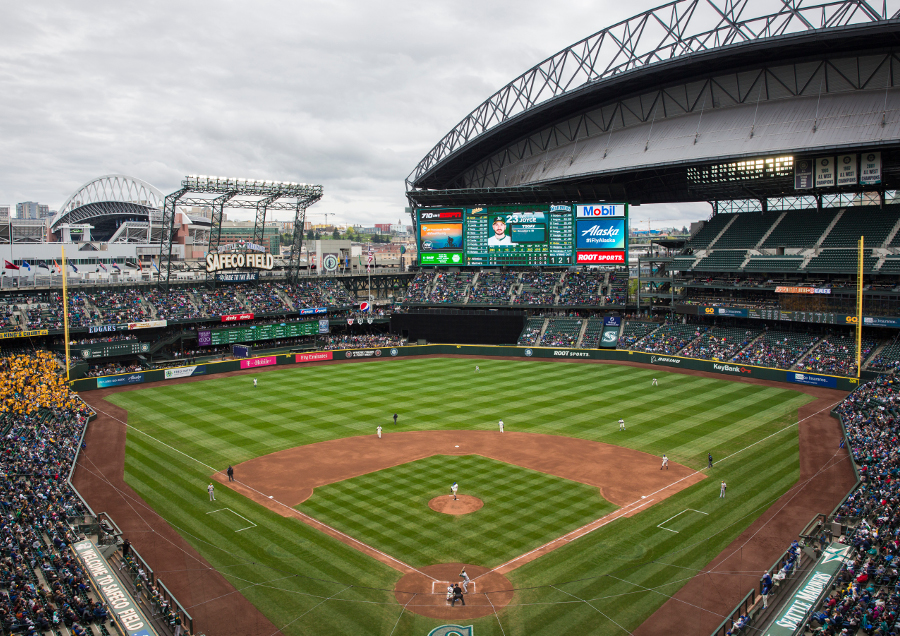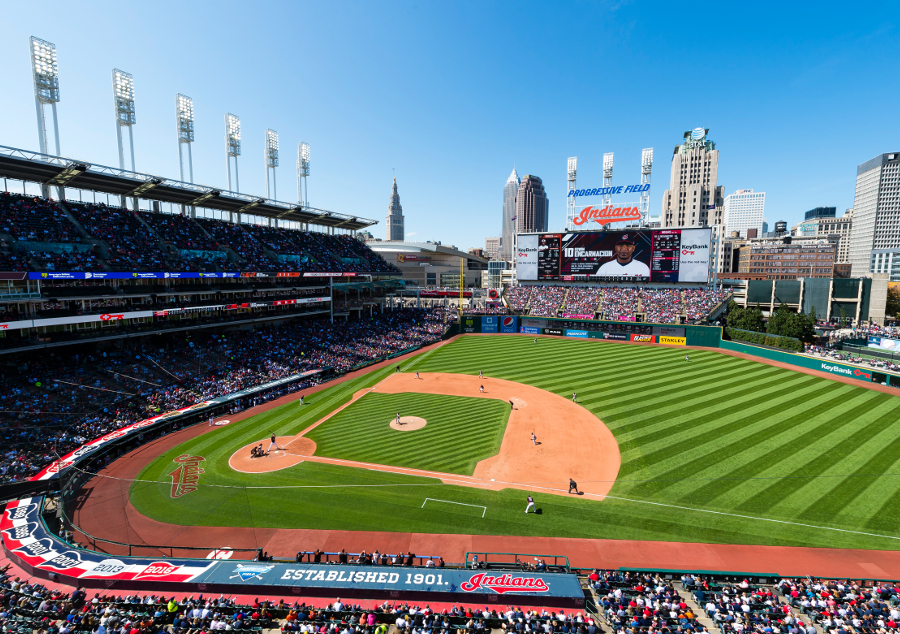Top 10 Major League Ballparks


Image credit: ATT Park (Getty Images)
The Baseball America team of major league correspondents and columnists spend countless days at major league ballparks all across the country each year. So who better to dish on which ballparks are best and what elevates them above the field?
Many correspondents gravitated toward the undisputed classics—Fenway Park, Wrigley Field and Dodger Stadium—because of the pull of history. Those parks have hosted a combined 27 World Series and have played home to more than a dozen Hall of Famers through the decades. Therefore, we didn’t think it fair to compare them with parks with much shorter histories.
But don’t worry: We give Fenway, Wrigley and Dodger their own spotlight below.
1. AT&T Park, San Francisco
Opened: 2000
Two-thirds of respondents chose the Giants’ home field as the best in the business. That practically counts as a unanimous decision in such a subjective task as ranking ballparks. AT&T Park turns a disadvantage—a tight footprint butted up against the San Francisco Bay—into an advantage with a creative ballpark design and unparalleled water view.
“It’s easy to stroll around the park, and worthwhile, too, since the Giants provide so much to look at inside the park—artifacts, history, etc. And that’s totally apart from its incredible setting and view! Tremendous food options (toasted ravioli!), and each vantage point has something different to offer. Only the name is bad.” —Phil Miller (Twins)
“Baseball, garlic fries and the big glove. Good sight lines for the fans and a fun experience.” —Casey Tefertiller (Athletics)
“Beautiful location in a unique city with different energy, big crowds and great music.” —Patrick Mooney (Cubs)
2. PNC Park, Pittsburgh
Opened: 2001
Fans waited until the park’s 13th year to see a winning Pirates team, but perhaps the “most picturesque backdrop imaginable,” according to D-backs correspondent Nick Piecoro, helped dull the pain.
“The visuals are off the charts—I’m ignoring the high level of the press box as a negative—with the downtown view and the Clemente bridge. It’s just so well done. PNC is an attractive park put exactly where it belonged.” —Tom Haudricourt (Brewers)
3. Oriole Park at Camden Yards, Baltimore
Opened: 1992
The Orioles kicked off the retro ballpark boom with a new classic. “The oldest of the new age was done right,” Athletics correspondent Casey Tefertiller said.
“A very intimate stadium. The warehouse in right field is timeless, and it has the best press box view in baseball, but beware: foul balls come in often, and fast.” —Anthony Fenech (Tigers)

4. Safeco Field, Seattle
Opened: 1999
A modern park with an old-school feel, the Mariners’ home has aged well, complete with its retractable roof that is essential for Pacific Northwest weather.
“Another relaxed atmosphere, and probably the best food and beverage menu in the game. I’m a sucker for the drizzly-day ambiance, where the game goes on anyway under the roof. Fan-friendly to the extreme.” —Phil Miller (Twins)
5. Petco Park, San Diego
Opened: 2004
An aesthetically pleasing park set in fantastic baseball weather grants the Padres significant home-field advantage.
“Just one of those great downtown parks. They put it in such a cool place, with the attached warehouse building. Just a visually pleasing park in a visually pleasing place.” —Tom Haudricourt (Brewers)

6. Coors Field, Denver
Opened: 1995
The outfield is huge at the Rockies’ home field, and so too is the club’s popularity with fans, judging from attendance history.
“Spotless park, great food, and they’re always adding features that make for a good fan experience. The brewery in the building is a tremendous place to visit before games, and the BBQ is pretty great, too. I wish it was a little easier to get to, but the light rail has helped.” —Phil Miller (Twins)
7. Target Field, Minneapolis
Opened: 2010
One of baseball’s northernmost franchises, the Twins moved from the climate-controlled Metrodome to open-air Target Field, and the move has been met with rave reviews.
“Target Field is one of the first modern parks. It’s not trying to cash in nostalgia but creating its own legacy. It benefits from a downtown setting and beautiful Minnesota summers. It has wide concourses and great views of the playing field.” —C. Trent Rosecrans (Reds)

8. Kauffman Stadium, Kansas City, Mo.
Opened: 1973
The Royals’ home field is an overlooked classic with good bones and a unique water feature in right-center field. An extensive 2006 renovation helped modernize “The K” with wider concourses and a huge hi-def scoreboard.
“Kauffman shows what the cookie-cutters got wrong, making a wonderful palace for baseball. Again, it has wide concourses, great sight lines and a pretty backdrop.” —C. Trent Rosecrans (Reds)
9. Citi Field, New York
Opened: 2009
The Mets upgraded more than the home run apple when they moved across the parking lot from Shea Stadium nearly a decade ago.
“I don’t think this place gets talked about often enough. I like the way they blended old and new. They have good sight lines all around the concourse—and they’ve got a Shake Shack in center field.” —Nick Piecoro (D-backs)

10. Progressive Field, Cleveland
Opened: 1994
The Indians replaced “The Mistake By The Lake” with this beloved new classic, ushering in an era of sustained on-field success in Cleveland.
“Progressive deserves its spot for its open feel, the fact that it’s centrally located downtown, has the biggest video screen in MLB, and for the Indians’ Heritage Park hall of fame in center field.” —Scout for an AL team
A League Of Their Own
“For me, the greatest ballpark experience is being able to walk from the present into the past,” Athletics correspondent Casey Tefertiller said. “So it is only natural that my favorite parks would be the old ones.”
Other correspondents echoed those sentiment, so we knew we had to create a separate category for the undisputed classics, those parks that opened before the six-division format, before free agency, before the DH, before expansion took hold.
Pirates correspondent Dustin Dopirak eloquently distills the charm of the three holiest baseball cathedrals.
Fenway Park, Boston
Opened: 1912
World Series: 11 (spanning 1912 to 2013)
Red Sox Hall of Famers Through The Years: Joe Cronin, Ted Williams, Carl Yastzemski, Wade Boggs, Pedro Martinez
“I give Fenway the slight edge (over Wrigley Field) because of the uniqueness of the field itself—The Green Monster, Pesky’s Pole, the notch out in center field—and because it’s kept in a little bit better shape. (Pirates manager) Clint Hurdle called it a “living museum” when the Pirates opened there last year. Not sure there’s any way I could say it better.”
Wrigley Field, Chicago
Opened: 1914
World Series: 7 (spanning 1918 to 2016)
Cubs Hall of Famers Through The Years: Gabby Hartnett, Ernie Banks, Billy Williams, Ferguson Jenkins, Ryne Sandberg
“The view of Lake Michigan from the Wrigley press box is pretty spectacular. The one area I would say Wrigley has the edge over Fenway is the surrounding neighborhood. Nothing wrong with the Fens, but the ballpark fits so naturally in Wrigleyville.”
Dodger Stadium,
Los Angeles
Opened: 1962
World Series: 9 (spanning 1963 to 2017)
Dodgers Hall of Famers Through The Years: Duke Snider, Sandy Koufax, Don Drysdale, Don Sutton
“Not sure there’s a better monument to post-World War II westward expansionism than Dodger Stadium. I love the hexagonal signs scoreboards and the corrugated pavilion in the outfield. The view of the mountains is gorgeous and make up for the complete mess that is the parking situation (and L.A. traffic in general.) The park is worth just about every inconvenience.”

Comments are closed.